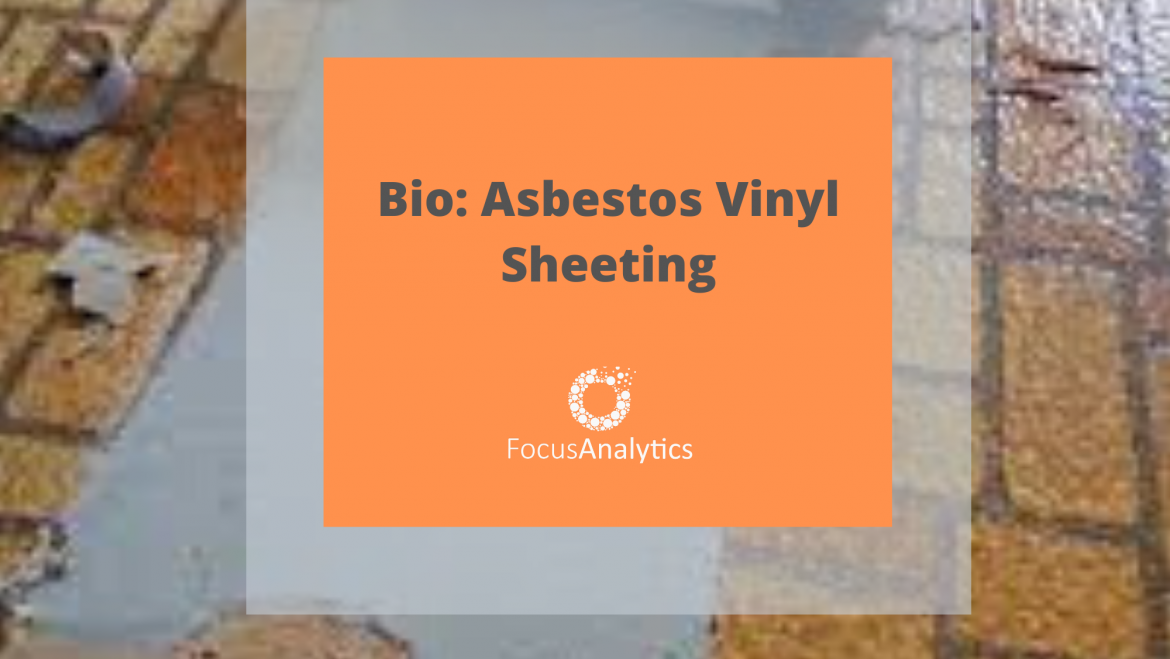The material under the spotlight this month is vinyl sheeting. Extremely popular floor covering in which we see many samples positive for the presence of chrysotile asbestos. This is generally found in a paperbacked textile, glued to the poly-vinyl layer. Why chrysotile? Because this serpentine asbestiform mineral has the ability to fold on itself. This occurs because the double layers that make up the molecule are slightly expanded resulting in a hollow fibrous structure. Historically, this made chrysotile very popular in the manufacturing of textiles, papers, and similar products, due to its textile strength.
When spun/woven into a paper backed material for vinyl sheeting, it gives the sheeting the desired rigid property, whilst still being able to bend. On visual observation, this material seems extremely well bonded within the sheeting. Unfortunately, the nature of the removal process is the factor that causes this to become friable. To remove correctly, all parts of the sheeting must come up from the surface it is stuck to. As a result, the tearing of the sheet tends to occur on the chrysotile paper-backed layer.
Historically, this layer has a very high percentage of asbestos, and asbestos air monitoring control levels tend to be elevated as a result (particularly with no or inadequate control measures in place). Consequently, this material must be removed with adequate control measures (with most regulatory bodies deeming this product friable). At Focus, we identify where the asbestos is on the sample layer.
Ensure when sampling that all layers of the sheeting are collected. This is so the lab can report on if asbestos is present, and on what layer. Its also good to understand if more than one layer of sheeting is present on a floor surface. It is common to find two or more layers, on top of each other.
See below under stereo microscopy, how this layer presents:


